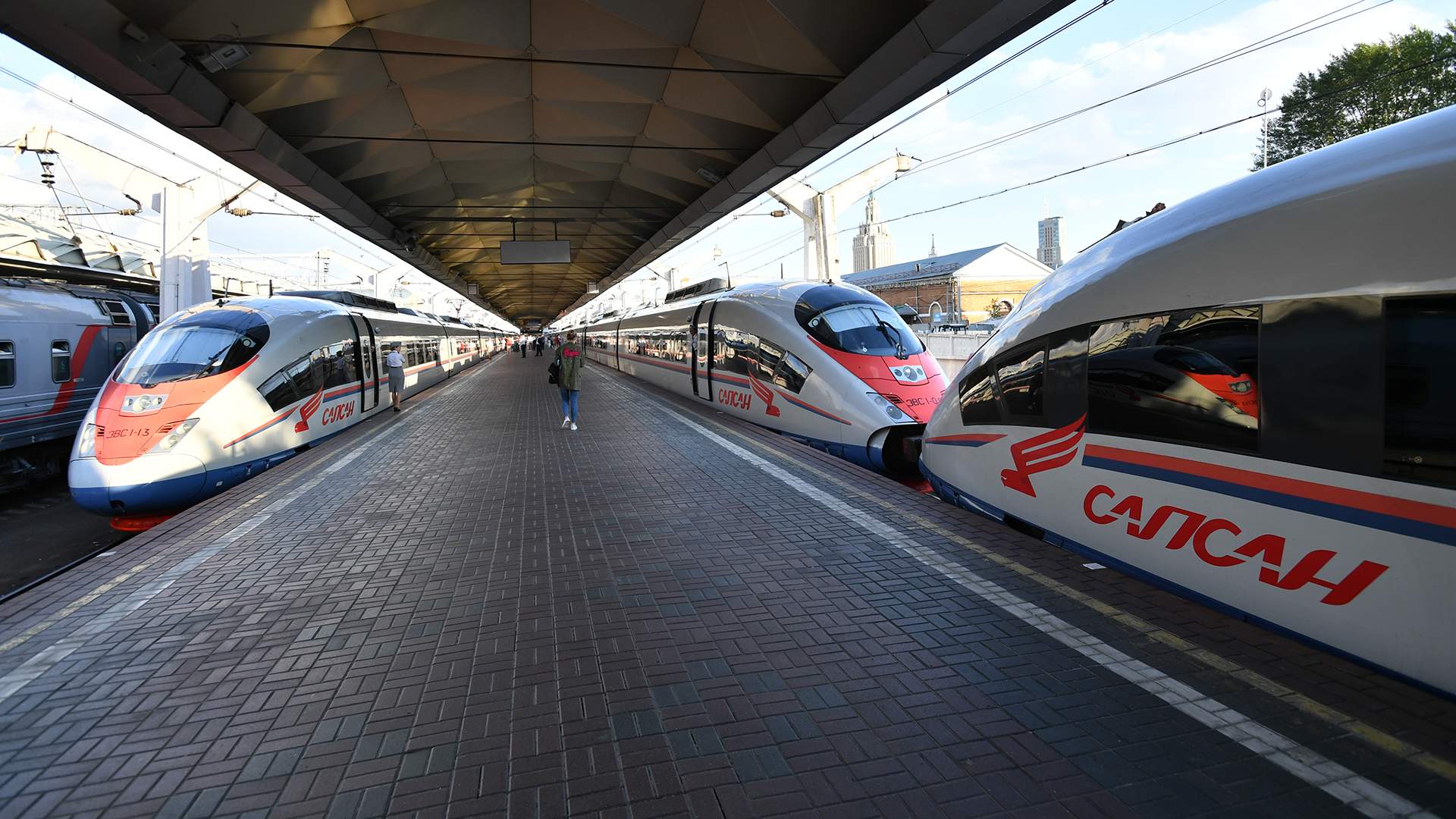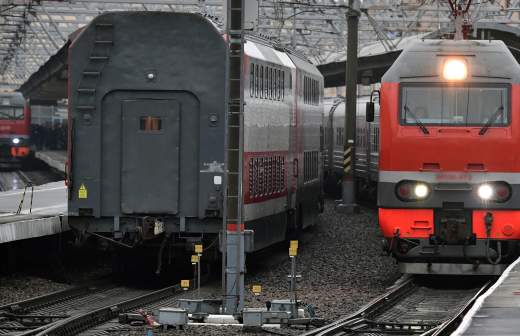- Статьи
- Economy
- Roadside coverage: Internet connection on trains between Moscow and St. Petersburg has become uninterrupted
Roadside coverage: Internet connection on trains between Moscow and St. Petersburg has become uninterrupted

The railway between Moscow and St. Petersburg has been completely covered by the Internet. This was shown by TelecomDaily tests and confirmed by the operators. The signalmen managed to solve a problem that has been going on for decades: the lack of normal access caused problems for passengers, particularly on Sapsan trains, experts say. On other railways, the situation with communications is much worse — it is necessary to cover and improve the quality of connections along at least half of their length, they add. Russian Railways reported that satellite communications are being considered to connect trains and passengers' gadgets, in particular.
The quality of communication on the Moscow – Petersburg railway
Mobile Internet is now fully available on the Oktyabrskaya Railway between Moscow and St. Petersburg - the largest Russian operators (Vimpelcom, Megafon and MTS) have covered the 650-kilometer route. This follows from the results of testing conducted in early April by TelecomDaily, which were reviewed by Izvestia. Just over a year ago, this figure was about 90%, the company notes.
So far, T2 is lagging slightly behind (coverage is just over 9/10 of the railway line), but the company, which left the federal level later than its competitors, is rapidly closing the gap, said Denis Kuskov, CEO of TelecomDaily. T2 objected: the direction is completely covered, the operator's 4G network covers more than 98% of the route.
As for voice communication, 99% of the line is now covered by it, so the famous remark of passengers traveling by train from Moscow to St. Petersburg: "I'm in Sapsan, I can be hard to hear," is gradually becoming a thing of the past, he added.
The researchers paid special attention to the study of communication quality in Sapsany. The specifics are in the speeds (up to 250 km/h) at which the Peregrine Falcons travel, which imposes special requirements on the organization of communication. In particular, operators have to install special receiving and transmitting equipment in these express trains. The measurements showed that high-speed mobile Internet is available to passengers, on average, in 93% of the trip time, and on the move the average speed is 12.3 Mb/s in the direction of the subscriber, the authors of the study emphasize.
Beeline has confirmed that the company's high-speed mobile Internet is available on the entire Sapsan route. This became possible thanks to close cooperation with Russian Railways, which made it possible to install repeaters in the wagons — special devices that amplify the signal, as well as the 900/2100 MHz frequency redistribution program conducted in 2024, the operator's press service added.
MTS also noted that it had provided full and stable signal coverage along the entire route on the railway between Moscow and St. Petersburg. The construction of the network was mostly completed more than two years ago, after which improvements were carried out on individual fragments. As part of the execution of the memorandum with Russian Railways, MTS has built more than 500 base stations: the project will continue this year, the company says.
"The key task is to provide the client with seamless connectivity along the entire route, and today more than 98% of the route is a secure 4G coverage area, when the subscriber is not just in the LTE coverage area, but can communicate via video, comfortably use social networks and a browser," Megafon noted.
The 4G network covers more than 98% of the route, in turn, T2 reported.
— Mobile subscribers in Russia are used to the ubiquitous high-quality 4G coverage in cities and do not want to be disconnected while traveling by train. We welcome the efforts of operators to expand coverage and develop telecom infrastructure along the railways in order to maintain the quality of services provided," the press service of the Ministry of Finance noted. — As part of the national project "Data Economics and Digital Transformation of the state", a domestic low-orbit satellite constellation is being created in Russia, which will provide global coverage and will provide remote areas, roads and railways with high-speed Internet.
How to improve the quality of communication on other highways
The railway between Moscow and St. Petersburg is considered the largest in Russia in terms of passenger traffic and attractive to operators in terms of passenger safety, said Leonid Konik, a partner at ComNews Research. According to him, it is unthinkable for any business person, or even just a modern person, to sit for four hours in the afternoon without the Internet. But for decades, this highway has been deprived of connectivity, he added.
Telephony and connection to the mobile Internet of railways and passengers is an old topic, it is almost as old as cellular communications in the Russian Federation, said Konstantin Ankilov, CEO of TMT Consulting. It is encouraging that the problem has been solved on almost the main Russian railway, but problems with voice communication and the Internet are present on almost all others, he added. In his opinion, telephony or network modernization is now necessary for almost half or even more of the length of Russian railways.
For many years, Russian Railways has been trying to provide the Moscow–Petersburg highway with the Internet, Leonid Konik noted. According to him, at the suggestion of the NIIAS departmental institute, an attempt was made to connect Wi-Fi routers in wagons via a geostationary satellite: such technology had been working in Europe for a long time, but NIIAS came to the conclusion that it could not be used in Russia.
— In recent years, the Internet has been supplied to the wagons from the base stations of mobile operators along the railway track. And although the territory between the two capitals is densely populated, not tundra or savannah, there was no connection for at least 20% of the way, and the speed of access left much to be desired," the expert notes.
T2 reported that, together with Russian Railways, they conducted a pilot to provide communications on Swallows on one of the routes.
"We are currently evaluating this project, based on the results of which we will plan to work with Swallows throughout the country," added Daria Kolesnikova, a representative of the operator.
The installation of equipment on most of the railway network for mobile operators is not considered a commercially profitable project, the press service of Russian Railways told Izvestia. Coverage is provided within settlements and railway stations today, but it is often absent on the stretches between them. But the company continues to work with all cellular operators on the issue of providing railway coverage with LTE communication networks, they noted.
— In addition, the company is working on the implementation of a technology called Radio-Ethernet in the language of IT specialists. This is an alternative method of delivering a radio signal: the technology provides radio coverage precisely in the right-of-way of the railway, which guarantees a stable and high-speed connection between the moving train and the ground infrastructure. Mini-base stations are installed inside the train, which will provide cellular communication inside the train for any category of devices, be it a push—button phone or a smartphone, the Russian Railways press service said.
The company also expects to create a domestic broadband communications network using a low-orbit constellation of satellites. Samples of equipment are currently being tested in laboratory conditions, and after the launch of the grouping, the company will immediately begin testing on trains, the Russian Railways press service noted.
In general, the situation with communications along railways is as follows: if a section of track falls within the range of base stations in nearby settlements, voice and Internet are there, if it does not, especially in sparsely populated areas, then it does not, explained Sergey Polovnikov, head of the Content-Review project. The problem could be solved using traditional technologies, but this requires ensuring operators' access to the Russian Railways infrastructure, the expert concluded.
Переведено сервисом «Яндекс Переводчик»








